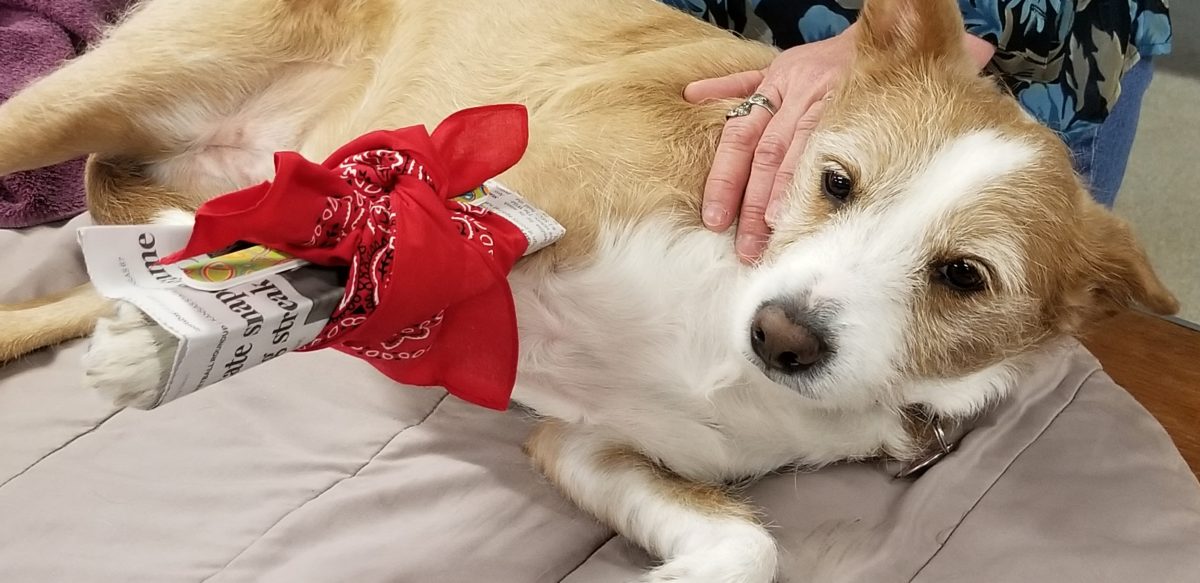Lisa Lippman, DVM, knows the value of always acquiring knowledge. That may explain why in addition to her skills in house call medicine, general practice, and emergency veterinary medicine, she made the decision to complete a two-day course to become a pet first aid/CPR instructor.
Her reason is simple: “In a veterinary clinic, medicines and diagnostic tools are often within my reach as a veterinarian,” says Dr. Lippman, who practices in Manhattan and Brooklyn. “But if something happened at home with my dog, Chloe, I know I must act quickly using what I have at home to stabilize her and transport her safely to the nearest veterinary clinic. Knowing what to do and what not to do in a pet emergency when minutes count is what learning pet first aid is all about.”
Dr. Lippman completed the veterinarian-approved instructor course offered by Pro Pet Hero a few months ago and now conducts in-person pet first aid classes in New York City in addition to her regular veterinary practice.
Don’t Panic!
One of the biggest skills she teachers her pet first aid students is to not panic. Another is to think in the moment instead of fretting about what happened or what could happen with an injured pet.
“Dogs and cats are so good at reading our emotional states,” she says. “They can and will react to our cues. So if a person screams or rushes up to an injured animal, he or she can unintentionally spike the animal’s stress level. We know that stress can have devastating effects on the health of animals. Plus, your actions can increase your risk of being bit by a scared pet in pain.”
She incorporates Fear Free handling techniques to help students master how to safely approach an injured animal and apply a muzzle to safely restrain an injured dog or cat without increasing the animal’s level of stress or fear.
“Remain calm, approach an injured pet slowly from the back, never head-on, and speak in a confident tone,” she says. “Go with low lighting if possible.” The goal is to always appear non-threatening to the animal.
Handling Heatstroke
One of the biggest threats to a pet’s life is suffering heatstroke. It can come on quickly if the pet is locked in a parked car or overexerts himself playing on a hot day.
“Dogs and cats do not sweat like us – they do not have skin pores all over their bodies like we do,” says Dr. Lippman. “They sweat through their paw pads. Heatstroke is one of the worst emergency situations I have seen.” Signs include panting and drooling, difficulty breathing, weakness or collapse, bloody diarrhea, and vomiting.
Her advice: “If your pet is panting heavily, get him to shade or inside an air-conditioned home. Dip his paws in cool water – never use ice because the cold can shock the body. I do not recommend applying cool, wet towels on the skin because these towels can trap in the body heat.”
Wound Care
Dr. Lippman is also on a crusade to correct a popular myth of using hydrogen peroxide to clean a wound on a dog or cat.
“One should only use hydrogen peroxide orally to induce vomiting and only under a veterinarian’s recommendation,” she says. “Never use hydrogen peroxide to clean a wound on a dog or cat because it stings and will damage the surrounding tissue. It also will slow down the natural healing process, making your pet more susceptible to infection.”
Safety Check
She also recommends making sure that contents in a pet first aid kit are safe for use on cats and dogs.
“Some dogs or cats can develop allergic reactions to bee stings and go into anaphylactic shock if not given an antihistamine immediately,” she says. “But make sure the over-the-counter antihistamine only contains the active ingredient diphenhydramine. It should not contain acetaminophen, which can be toxic to cats and dogs. And definitely, no flavoring.”
Dr. Lippman hopes all pet professionals and pet parents see the value of enrolling in a veterinarian-approved course to learn how to perform cardiopulmonary resuscitation and handle a conscious pet who is choking or bleeding, has ingested poison, injured a leg, or other situations.
“One of the best ways to show your pet just how much you love him is to take a pet first aid class – you just may learn skills that could save his life one day,” says Dr. Lippman.
You can take veterinarian-approved pet first aid/CPR course online or in person. For self-paced online courses, visit Pro Pet Hero at www.propethero.com or Udemy.com at www.udemy.com. For in-person or live, interactive video classes, visit www.petfirstaid4u.com or www.petsafetycrusader.com.
This article was reviewed/edited by board-certified veterinary behaviorist Dr. Kenneth Martin and/or veterinary technician specialist in behavior Debbie Martin, LVT.








